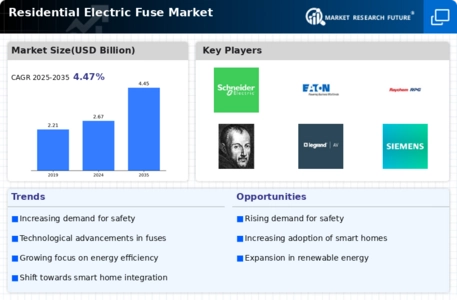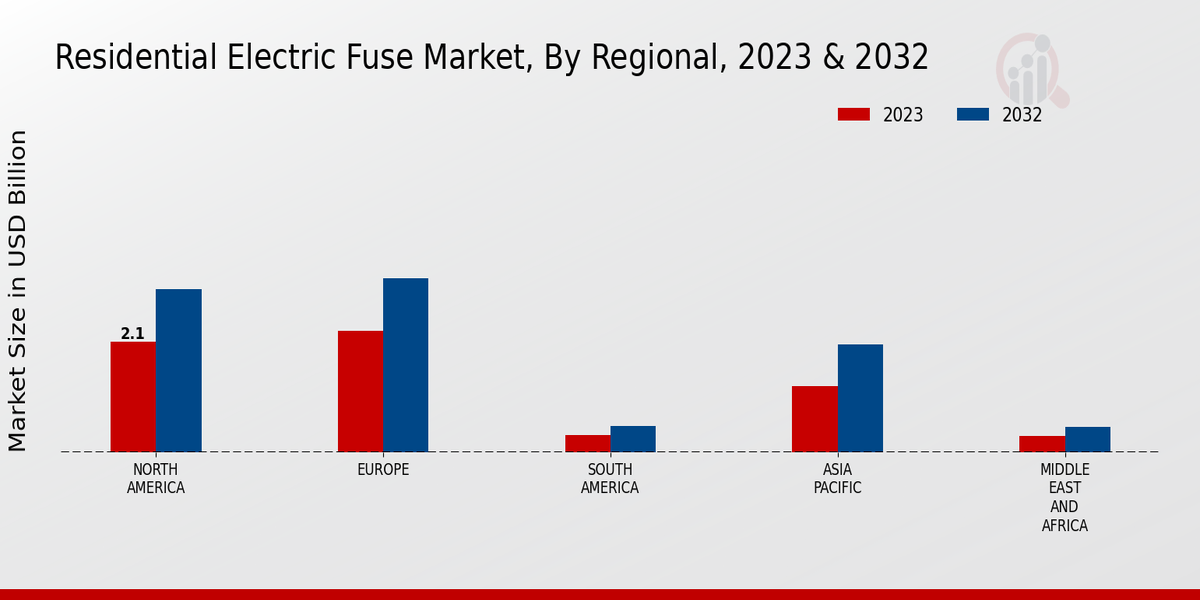Residential Electric Fuse Market Summary
The Global Residential Electric Fuse Market is projected to grow from 2.87 USD Billion in 2024 to 4.65 USD Billion by 2035.
Key Market Trends & Highlights
Residential Electric Fuse Key Trends and Highlights
- The market is expected to experience a compound annual growth rate (CAGR) of 4.75 percent from 2025 to 2035.
- By 2035, the market valuation is anticipated to reach 4.45 USD Billion, indicating robust growth potential.
- in 2024, the market is valued at 2.87 USD Billion, reflecting a solid foundation for future expansion.
- Growing adoption of smart home technologies due to increased consumer awareness is a major market driver.
Market Size & Forecast
| 2024 Market Size | 2.87 (USD Billion) |
| 2035 Market Size | 4.65 (USD Billion) |
| CAGR (2025-2035) | 4.47% |
Major Players
Schneider Electric, Eaton, ABB, Raychem, Mersen, Legrand, Siemens, Cooper Bussmann, CHINT Group, Toyo Denki Seisakusho, Littelfuse, General Electric (GE), Mitsubishi Electric, Fuji Electric






















Leave a Comment